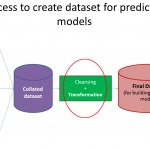
Introduction
The field of integrated circuit (IC) design is experiencing a rapid evolution driven by the demand for more powerful and energy-efficient electronic devices. As the complexity of IC designs increases, traditional design methods struggle to keep pace. To overcome these challenges, the integration of artificial intelligence (AI) into IC design workflows has emerged as a transformative solution. In this article, we will explore the applications of AI in accelerating IC design workflows, supported by existing technologies and real-world examples.
I. Enhancing Design Exploration with AI
1.1 The Complexity Challenge
IC design involves a multitude of variables and constraints that must be optimized to achieve desired performance metrics. With the increasing complexity of designs, manual exploration of the design space becomes impractical and time-consuming. This is where AI can make a significant impact.
1.2 Machine Learning in Design Exploration
Machine learning algorithms can be trained to analyze vast amounts of design data, learn patterns, and identify optimal design configurations. By leveraging AI, design teams can accelerate the exploration of various design options, leading to improved performance, reduced power consumption, and shortened design cycles.
1.3 Real-World Example: Google’s AI for IC Design
Google has been at the forefront of leveraging AI in IC design. In 2020, they announced the use of machine learning techniques to design and optimize their tensor processing units (TPUs). By using AI-driven design exploration, Google was able to achieve a 10x increase in computational performance compared to their previous generation TPUs. This example demonstrates the potential of AI in pushing the boundaries of IC design.
II. AI-Enabled Design Verification
2.1 The Importance of Design Verification
Design verification is a critical step in the IC design process, ensuring that the final design meets the desired specifications and functionalities. However, the traditional verification methods are time-consuming and often incomplete, leaving room for potential errors and design flaws.
2.2 AI-Based Functional Verification
AI can enhance design verification by automating the process and identifying potential design issues. Machine learning algorithms can be trained on a vast dataset of verified designs, enabling them to detect patterns and anomalies in the design under verification. This can significantly reduce the time and effort required for functional verification while improving overall design quality.
2.3 Real-World Example: Mentor’s Questa Vanguard
Mentor, a Siemens business, has developed an AI-based verification tool called Questa Vanguard. This tool utilizes machine learning to analyze design behaviors and automatically detect functional errors and bugs. By leveraging AI for design verification, Mentor enables IC designers to identify and fix design issues more efficiently, leading to faster time-to-market and improved product reliability.
III. AI-Assisted Physical Design
3.1 The Challenges of Physical Design
Physical design involves the layout and placement of components on an IC, considering factors such as power distribution, signal integrity, and manufacturing constraints. This process is time-consuming and requires expert knowledge to achieve optimal results.
3.2 AI for Automated Physical Design
AI can revolutionize physical design by automating repetitive tasks and assisting designers in making informed decisions. Machine learning algorithms can learn from existing design databases and propose optimized layouts, reducing design iterations and improving overall efficiency.
3.3 Real-World Example: IBM’s AI-Driven Physical Design
IBM Research has developed an AI-driven physical design tool that utilizes reinforcement learning to optimize chip layouts. The tool learns from human designers’ expertise and explores design possibilities, generating layouts that meet the design constraints more efficiently. This AI-assisted approach significantly reduces the design cycle time and enables designers to focus on higher-level aspects of the design process.
Conclusion
The integration of AI into IC design workflows offers immense potential for accelerating design cycles, improving design quality, and pushing the boundaries of what is possible in electronic devices. Through AI-driven design exploration, design verification, and physical design, IC designers can achieve higher performance, energy efficiency, and faster time-to-market. Real-world examples from companies like Google, Mentor, and IBM demonstrate the tangible benefits of leveraging AI in IC design. As AI continues to advance, it will undoubtedly play a pivotal role in shaping the future of IC design, enabling the creation of more advanced, efficient, and innovative electronic devices.















